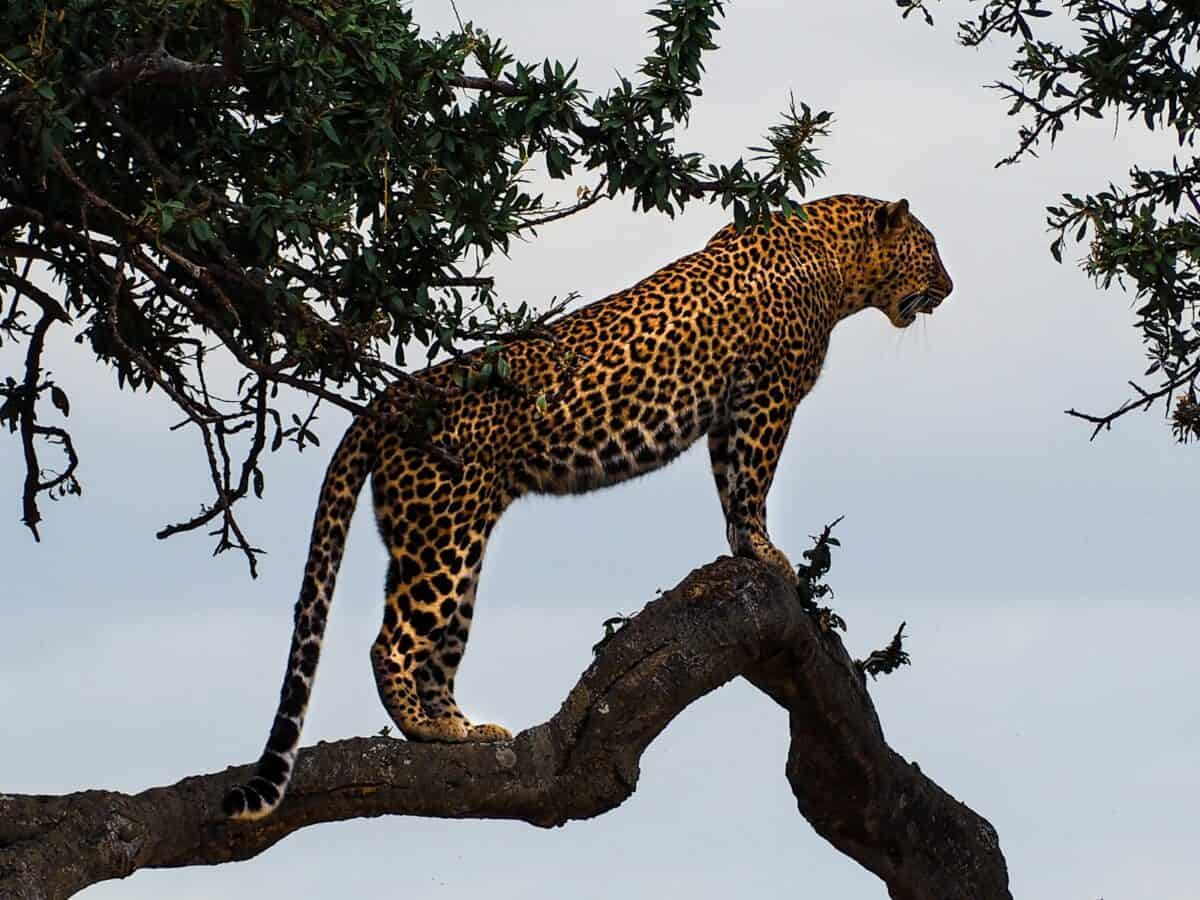From the frozen landscapes of Canada to the lush rainforests of South America, the Americas host an impressive diversity of wild feline species. These magnificent predators have adapted to various habitats across two continents, developing unique characteristics and hunting strategies. While the powerful jaguar and elusive mountain lion might be familiar to many, several lesser-known wild cats also prowl through the American wilderness. This article explores 14 remarkable wild cat species native to North, Central, and South America, highlighting their distinct features, behaviors, conservation status, and the challenges they face in our rapidly changing world.
Jaguar – The Americas’ Largest Wild Cat

The jaguar (Panthera onca) reigns as the largest wild cat in the Americas and the third-largest cat species globally after tigers and lions. Known for its powerful bite force capable of piercing turtle shells and crocodilian armor, jaguars are apex predators with distinctive rosette patterns that differ from leopards by containing small spots inside. These magnificent cats historically ranged from the southwestern United States to northern Argentina, though their territory has shrunk significantly. Unlike many cats, jaguars enjoy water and are excellent swimmers, often found near rivers and wetlands in tropical and subtropical environments. With their stocky build and muscular frame, they can take down prey much larger than themselves, including capybaras, caimans, and even adult tapirs. Currently listed as Near Threatened by the IUCN, jaguar populations continue to decline due to habitat fragmentation, poaching, and human-wildlife conflict.
Mountain Lion – The Adaptable Hunter

The mountain lion (Puma concolor), also known as cougar, puma, or panther, possesses the largest geographic range of any terrestrial mammal in the Western Hemisphere. From the Canadian Yukon to the southern Andes, these tawny cats have adapted to an incredible variety of habitats, including mountains, deserts, forests, and swamplands. Unlike the bigger cats, mountain lions cannot roar but instead vocalize through purrs, chirps, and whistles. These solitary and territorial predators are remarkable athletes, capable of leaping up to 40 feet horizontally and 15 feet vertically. Their primary hunting strategy involves stalking and ambushing prey, particularly deer, which constitute up to 70% of their diet in North America. Despite their impressive adaptability, mountain lions face significant threats from habitat loss, vehicle collisions, and conflict with humans, with some populations highly fragmented and at risk of local extinction.
Bobcat – The Resourceful Survivor

The bobcat (Lynx rufus) stands as one of North America’s most widespread and successful wild cats, ranging from southern Canada to central Mexico. Named for their distinctive “bobbed” tail, these medium-sized cats are highly adaptable and have managed to maintain stable populations even in areas with significant human development. Bobcats typically weigh between 15-35 pounds, with males about 30% larger than females. Their coat coloration varies from yellowish-brown to reddish-brown, patterned with distinctive dark spots and streaks that provide excellent camouflage. Despite their relatively small size, bobcats are formidable hunters capable of taking down prey several times their weight, including deer. Their diet primarily consists of rabbits, hares, and rodents, but they opportunistically consume birds, reptiles, and even insects. Unlike many wild cat species, bobcats have proven remarkably resilient to human encroachment, though they still face threats from habitat fragmentation, vehicle collisions, and fur trapping in some regions.
Canada Lynx – The Snowshoe Specialist

The Canada lynx (Lynx canadensis) is perfectly adapted to the northern forests and deep snows of North America. With its thick, silvery-gray fur, prominent ear tufts, and oversized paws that act as natural snowshoes, this medium-sized cat thrives in some of the continent’s harshest environments. Standing slightly taller than a bobcat but with a similar weight range of 15-30 pounds, the Canada lynx has evolved into a snowshoe hare specialist, with these lagomorphs constituting up to 90% of their diet in winter months. This specialization creates a remarkable predator-prey relationship, with lynx populations rising and falling in roughly 10-year cycles that follow snowshoe hare abundance. Canada lynx have disproportionately large paws covered with stiff hairs that effectively distribute their weight on snow, allowing them to pursue prey in deep powder where other predators would flounder. Listed as of Least Concern globally but threatened or endangered in portions of its U.S. range, the Canada lynx faces challenges from climate change, which affects snowshoe hare habitat and snow conditions, as well as forestry practices that alter the composition of boreal forests.
Ocelot – The Ornate Beauty

The ocelot (Leopardus pardalis) is instantly recognizable by its strikingly beautiful coat adorned with elongated rosettes and spots against a golden-yellow to gray background. These medium-sized cats, weighing between 18-35 pounds, range from the southern United States (primarily Texas) through Central America and much of South America. Primarily nocturnal and solitary, ocelots are exceptional hunters with keen eyesight and hearing that allow them to locate prey in the darkest conditions. Their diet consists mainly of small to medium-sized mammals, particularly rodents and rabbits, supplemented with birds, snakes, lizards, and fish. Ocelots are particularly adept at climbing and can hunt effectively in trees as well as on the ground. Once heavily targeted for the fur trade, with hundreds of thousands killed for their pelts, ocelots now face more significant threats from habitat loss and fragmentation. In the United States, fewer than 50 wild ocelots remain in isolated pockets of South Texas, making them one of the most endangered wild cats in North America. Throughout their range, conservation efforts focus on habitat corridors and reducing road mortality.
Margay – The Arboreal Acrobat

The margay (Leopardus wiedii) represents one of the most specialized arboreal cats in the world, with extraordinary adaptations for life in the trees. Smaller than the ocelot but with similar beautiful markings, margays typically weigh just 6-9 pounds. What makes these cats remarkable is their skeletal structure—they possess ankle joints that can rotate up to 180 degrees, allowing them to run down tree trunks headfirst, hang from branches by one hind foot, and move with incredible agility through the forest canopy. Additionally, their exceptionally long tail, often equaling their body length, provides crucial balance during arboreal maneuvers. Margays range from central Mexico to northern Argentina and Uruguay, primarily inhabiting evergreen and deciduous forests with dense vegetation. These elusive cats hunt mainly at night, targeting arboreal prey including small mammals, birds, insects, and even fruit. Research has documented margays mimicking the calls of prey species like tamarin monkeys to lure them within striking distance—a rare example of predator vocal mimicry. Listed as Near Threatened, margays face serious conservation challenges due to their dependence on intact forest habitat, low reproductive rate (typically one kitten per litter), and vulnerability to deforestation.
Jaguarundi – The Unusual Otter-Cat
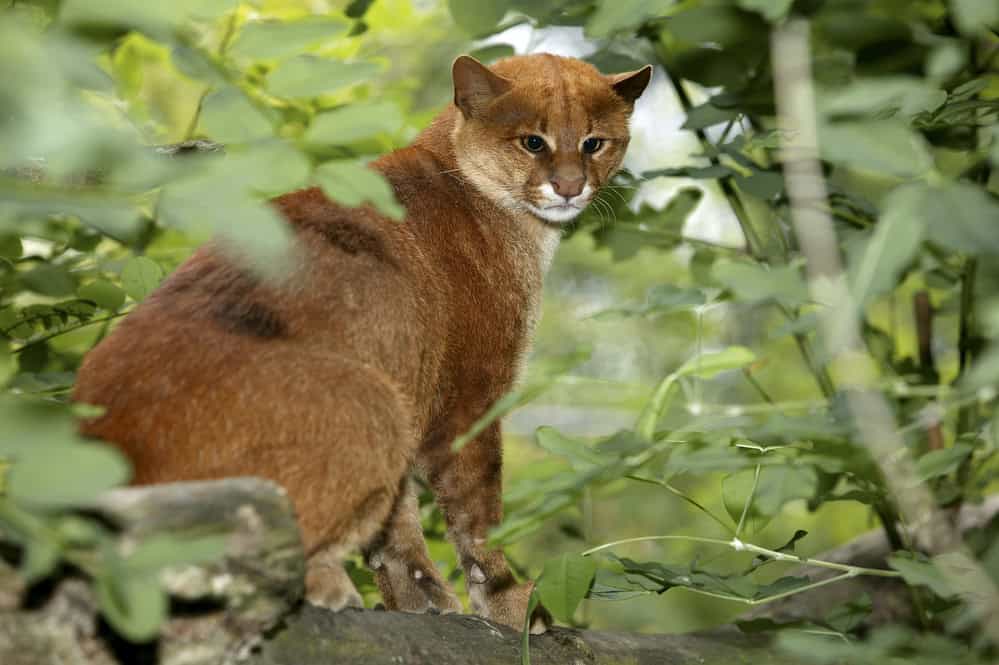
The jaguarundi (Herpailurus yagouaroundi) stands out among American wild cats for its unusual appearance, often described as otter-like or weasel-like rather than typically feline. With an elongated body, short legs, small, rounded ears, and a long tail, jaguarundis differ markedly from their spotted relatives. Their uniform coloration comes in two distinct color phases: a dark, charcoal gray to black “gray phase” and a reddish-brown “red phase,” both occurring within the same populations and even litters. Weighing between 8-20 pounds, jaguarundis range from southern Texas and Arizona through Central America to central Argentina. Unlike most small cats, jaguarundis are primarily diurnal (active during daylight hours), hunting in early morning and late afternoon. Their diet consists mainly of small mammals, birds, and reptiles, supplemented with fruit and vegetable matter—unusual dietary flexibility among felids. Jaguarundis occupy a variety of habitats from dense forests to scrublands and can adapt to moderately disturbed areas, though they generally avoid agricultural lands and human settlements. While listed as Least Concern globally due to their wide range, northern populations have declined significantly, with jaguarundis possibly extinct in the United States despite occasional unconfirmed sightings.
Geoffroy’s Cat – The Southern Survivor

Geoffroy’s cat (Leopardus geoffroyi) is a small but resilient wild cat native to the southern regions of South America, inhabiting areas of Argentina, Bolivia, Brazil, Chile, Paraguay, and Uruguay. About the size of a domestic cat, weighing between 4-11 pounds, these adaptable felines display remarkable environmental flexibility, thriving in habitats ranging from grasslands and marshlands to forests and mountain slopes up to 12,000 feet in elevation. Their coat varies from silvery-gray to yellowish-brown with numerous small black spots, and some melanistic (all-black) individuals occur, especially in humid forest regions. Geoffroy’s cats are primarily nocturnal and solitary, spending daylight hours concealed in dense vegetation or abandoned burrows. Their diet reflects their opportunistic nature, consisting of rodents, hares, small reptiles, amphibians, fish, birds, and invertebrates. Unlike many small wild cats, Geoffroy’s cats are excellent swimmers and will readily enter water to pursue prey. Although listed as Least Concern by the IUCN, these cats face localized threats from habitat conversion to agriculture, particularly soybean production, road mortality, and retaliatory killing by poultry farmers. Historically, they were heavily exploited for the fur trade, with hundreds of thousands killed before international protection was established.
Andean Mountain Cat – The High-Altitude Specialist
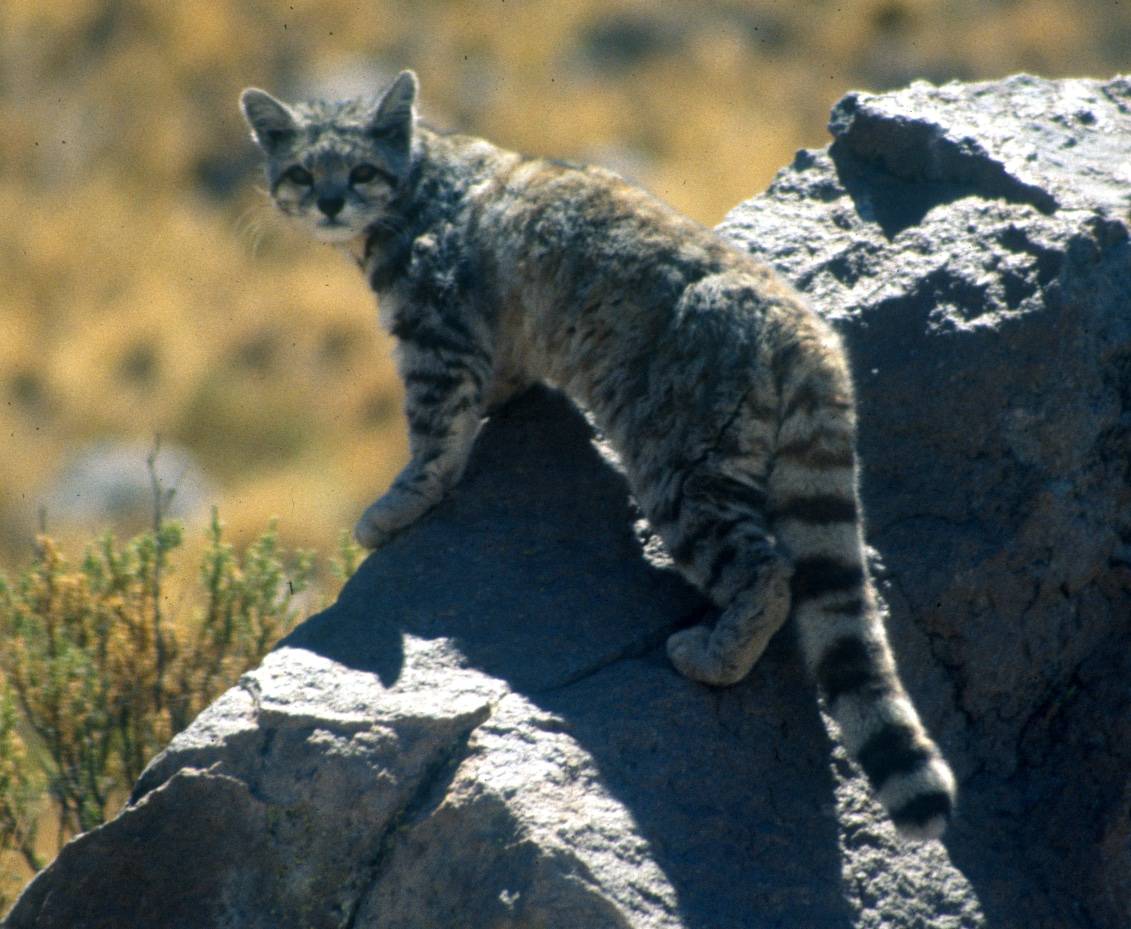
The Andean mountain cat (Leopardus jacobita) remains one of the world’s most elusive and least-studied wild cats, specializing in high-altitude environments across the Andean regions of Argentina, Bolivia, Chile, and Peru. These small cats, weighing 5-8 pounds, have evolved to survive in one of Earth’s most extreme environments, living primarily at elevations between 11,500-15,700 feet where oxygen is scarce and temperatures fluctuate dramatically. Their thick, ash-gray fur with distinctive brown-yellowish blotches and dark spots provides both insulation and camouflage among the rocky terrain of their mountain habitat. The Andean mountain cat’s extraordinarily long, thick tail—often exceeding the length of its body—serves as both a balance aid when navigating precarious mountain slopes and as a wrap-around scarf for warmth during cold nights. These cats have specialized to hunt mountain viscachas and chinchillas, rodents that comprise up to 90% of their diet. With an estimated population of fewer than 2,500 mature individuals and highly fragmented distribution, the Andean mountain cat is classified as Endangered. Threats include prey depletion from hunting, habitat degradation from mining and agriculture, persecution due to cultural beliefs, and competition with the more adaptable Pampas cat that occupies similar territories.
Pampas Cat – The Habitat Generalist

The Pampas cat (Leopardus colocola) demonstrates remarkable adaptability across an extensive range of South American habitats, from the Andean highlands to lowland grasslands, scrublands, and forests. This medium-sized wild cat, weighing between 5-16 pounds, exhibits extraordinary geographic variation in its appearance, with at least seven recognized subspecies differing significantly in coat color, markings, and size. Depending on location, Pampas cats may appear silvery-gray with horizontal stripes on the legs and tail, reddish with faint markings, or yellowish with distinct dark spots—contributing to taxonomic debates and past confusion with other small spotted cats. Unlike the specialized Andean mountain cat, the Pampas cat thrives as an ecological generalist, occupying elevations from sea level to over 16,000 feet and adapting its diet to locally available prey. They primarily hunt small mammals, birds, and reptiles, but will opportunistically consume insects and amphibians when available. Predominantly nocturnal and solitary, Pampas cats maintain territories through scent marking and vocalizations. While listed as Near Threatened, these adaptable cats face significant challenges from habitat conversion to agriculture (particularly in the grasslands from which they derive their name), persecution by farmers protecting poultry, road mortality, and, in some regions, hunting for traditional ceremonial purposes.
Oncilla – The Little Spotted Cat
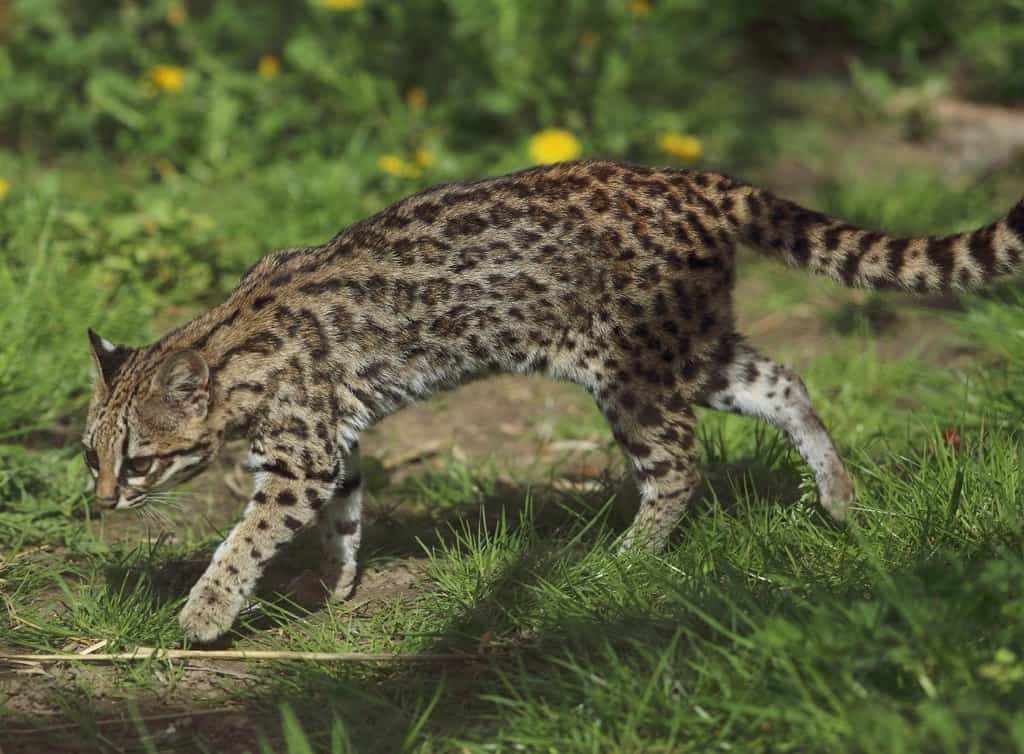
The oncilla (Leopardus tigrinus), also known as the tiger cat or little spotted cat, ranks among the smallest wild cats in the Americas, typically weighing just 3-7 pounds—smaller than many domestic cats. Despite their diminutive size, oncillas display the classic spotted coat pattern of larger felids, with dark rosettes and spots against a background ranging from light brown to ochreous or gray depending on habitat and geographic location. These small cats inhabit a discontinuous range from Costa Rica through much of northern and central South America, including Colombia, Venezuela, Ecuador, Peru, Bolivia, Brazil, Paraguay, and northern Argentina. Primarily nocturnal and solitary, oncillas are excellent climbers that divide their hunting activities between ground and trees, preying on small mammals (particularly rodents), birds, lizards, and large insects. Recent genetic studies have revealed significant diversity within what was once considered a single species, with the southern population now recognized as a separate species, Leopardus guttulus (Southern tiger cat). Throughout their range, oncillas face serious threats from deforestation and habitat fragmentation, particularly in the Atlantic Forest of Brazil where some populations have become critically endangered. Listed as Vulnerable globally, these miniature wildcats have a naturally low population density and low reproductive rate, making them particularly susceptible to human-caused pressures.
Kodkod – The World’s Smallest American Cat
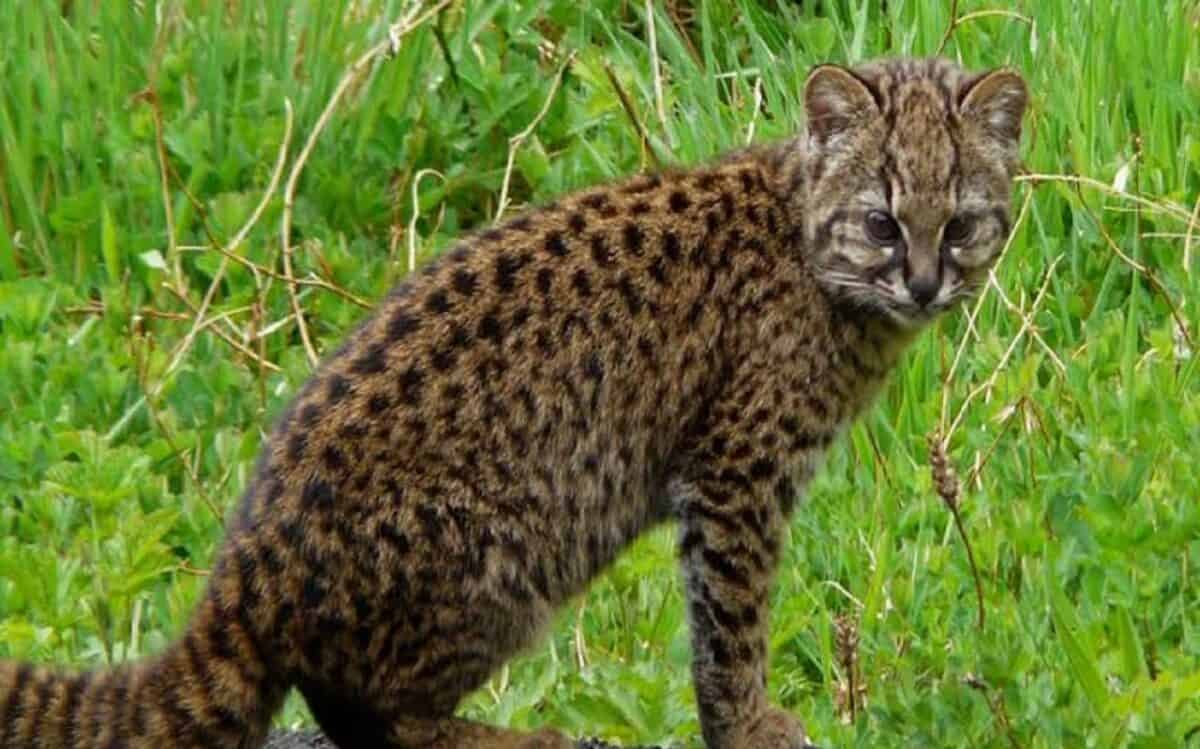
The kodkod (Leopardus guigna), also known as the güiña, holds the distinction of being the smallest wild cat in the Americas and one of the smallest wild cats worldwide, weighing a mere 4-5.5 pounds. These diminutive felines are endemic to central and southern Chile and the adjoining narrow strip of Argentina, with a highly restricted range of approximately 62,000 square miles—one of the smallest distributions of any wild cat species. Despite their limited geographic presence, kodkods demonstrate remarkable habitat versatility within this range, occupying temperate rainforests, bamboo thickets, agricultural areas, and even exotic timber plantations up to elevations of 6,200 feet. Their dark spotted coat ranges from brownish-yellow to grayish-brown, providing excellent camouflage in the dense undergrowth of their forest habitat. Kodkods are primarily nocturnal and exceptional climbers, spending significant time hunting in trees for birds, lizards, and small mammals. They’ve also adapted to hunt introduced species like rabbits and rats. With a global population estimated at fewer than 10,000 mature individuals and declining, kodkods are classified as Vulnerable. The primary threats include habitat loss from logging and agricultural expansion, persecution by farmers protecting poultry, predation by domestic dogs, and accidental mortality in traps set for introduced species.
Margay’s Lesser-Known Cousin The Northern Tigar Cat

The Northern tiger cat (Leopardus tigrinus) is often confused with the margay due to similar appearance, but represents a distinct species with its own ecological niche. Originally considered a single species throughout its range, genetic studies have revealed that northern and southern populations represent separate species, with the northern form retaining the scientific name Leopardus tigrinus. These small spotted cats typically weigh between 4.5-7.5 pounds, with a slender build and proportionally smaller feet and head compared to the similar-looking ocelot. Their coat displays a complex pattern of open rosettes and solid spots against a background coloration that varies from pale yellow to tawny brown across their range from Costa Rica through northern South America. Unlike their close relative the margay, Northern tiger cats lack the extreme joint flexibility for head-first descent of trees, though they remain capable climbers. Northern tiger cats are primarily terrestrial hunters that prey on small mammals, birds, and reptiles, demonstrating remarkable adaptability to human-modified landscapes when persecution is absent.
Conclusion:
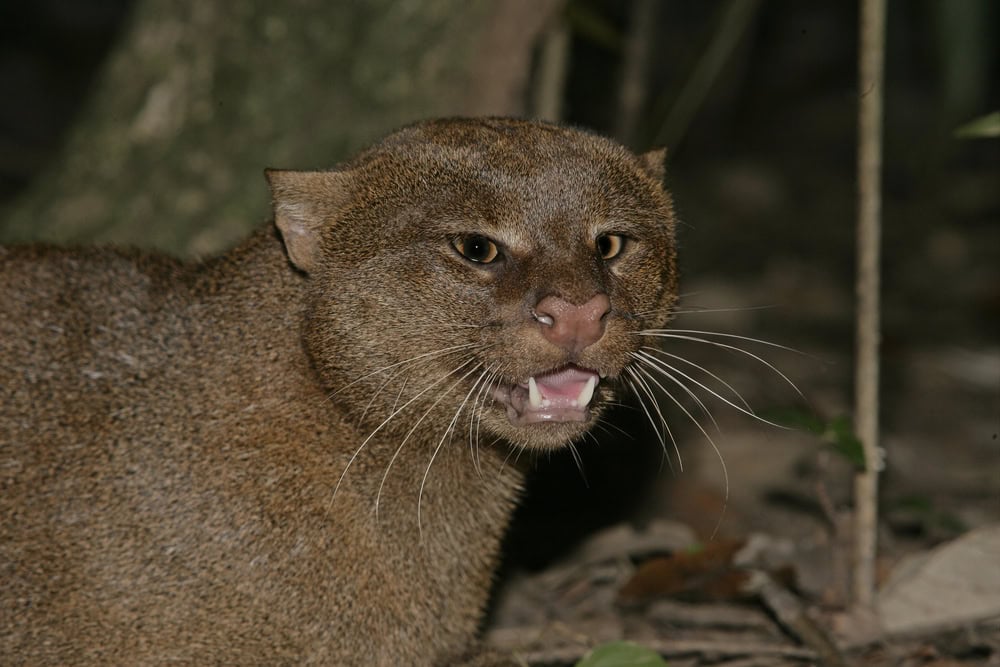
From the towering jaguar to the tiny kodkod, the wild cats of the Americas represent a stunning range of evolutionary adaptations, ecological niches, and survival strategies. These 14 remarkable species embody the beauty, resilience, and vulnerability of the natural world across two continents. Yet, despite their diversity and adaptability, they all face mounting threats from habitat loss, climate change, human-wildlife conflict, and environmental degradation. Conservation efforts tailored to the unique needs of each species—whether preserving critical corridors for jaguars, protecting the dense forests of the margay, or mitigating human impacts on the fragile populations of the Andean mountain cat—are essential to ensure that these magnificent predators continue to thrive in the wild. As we deepen our understanding of these wild felines and the challenges they face, we also recognize our responsibility to protect the ecosystems they call home, safeguarding their future and the biodiversity of the Americas for generations to come.
- 14 Creatures That Can Freeze and Thaw Back to Life - August 9, 2025
- 10 Animals That Risked Their Lives to Save Humans - August 9, 2025
- 14 Reasons Why Bears Are Afraid of Humans (Most of the Time) - August 9, 2025

